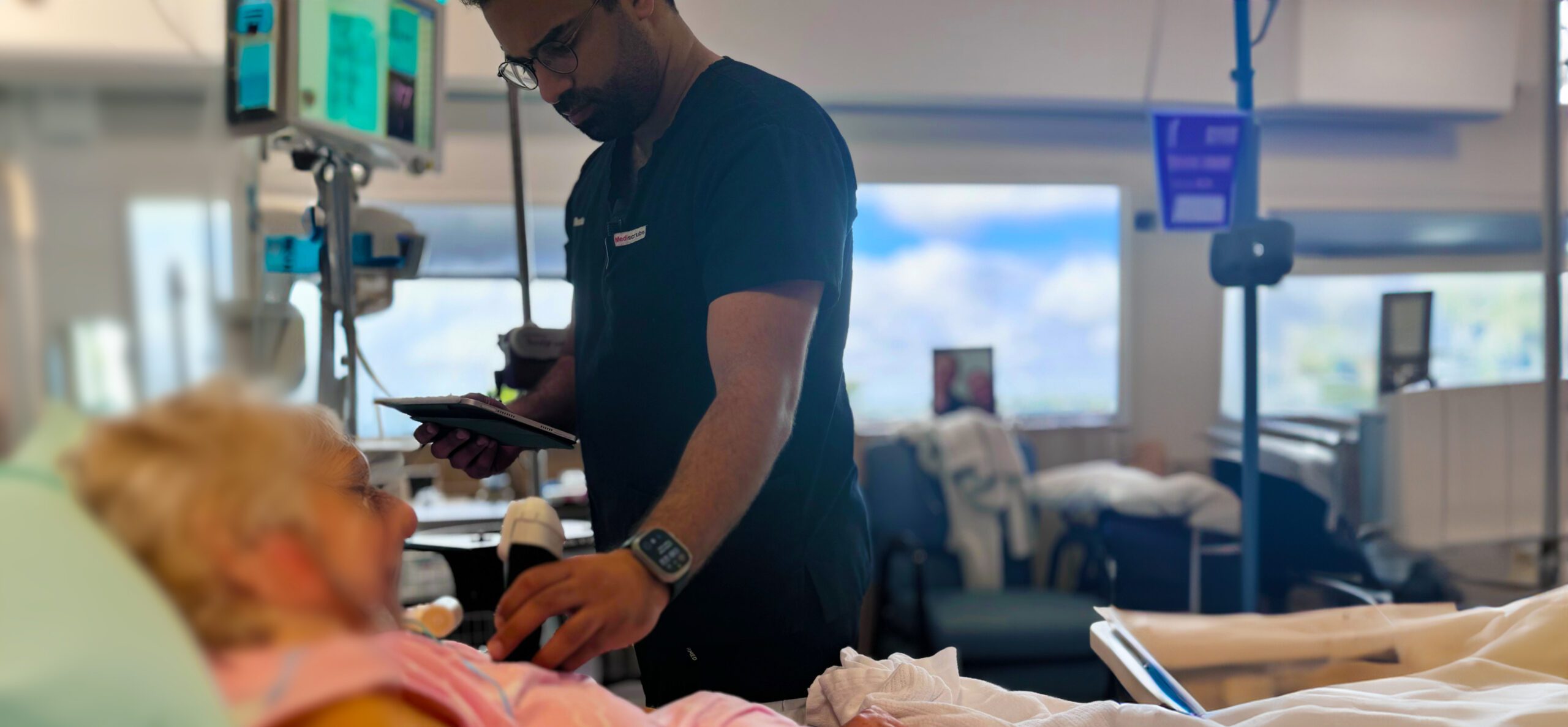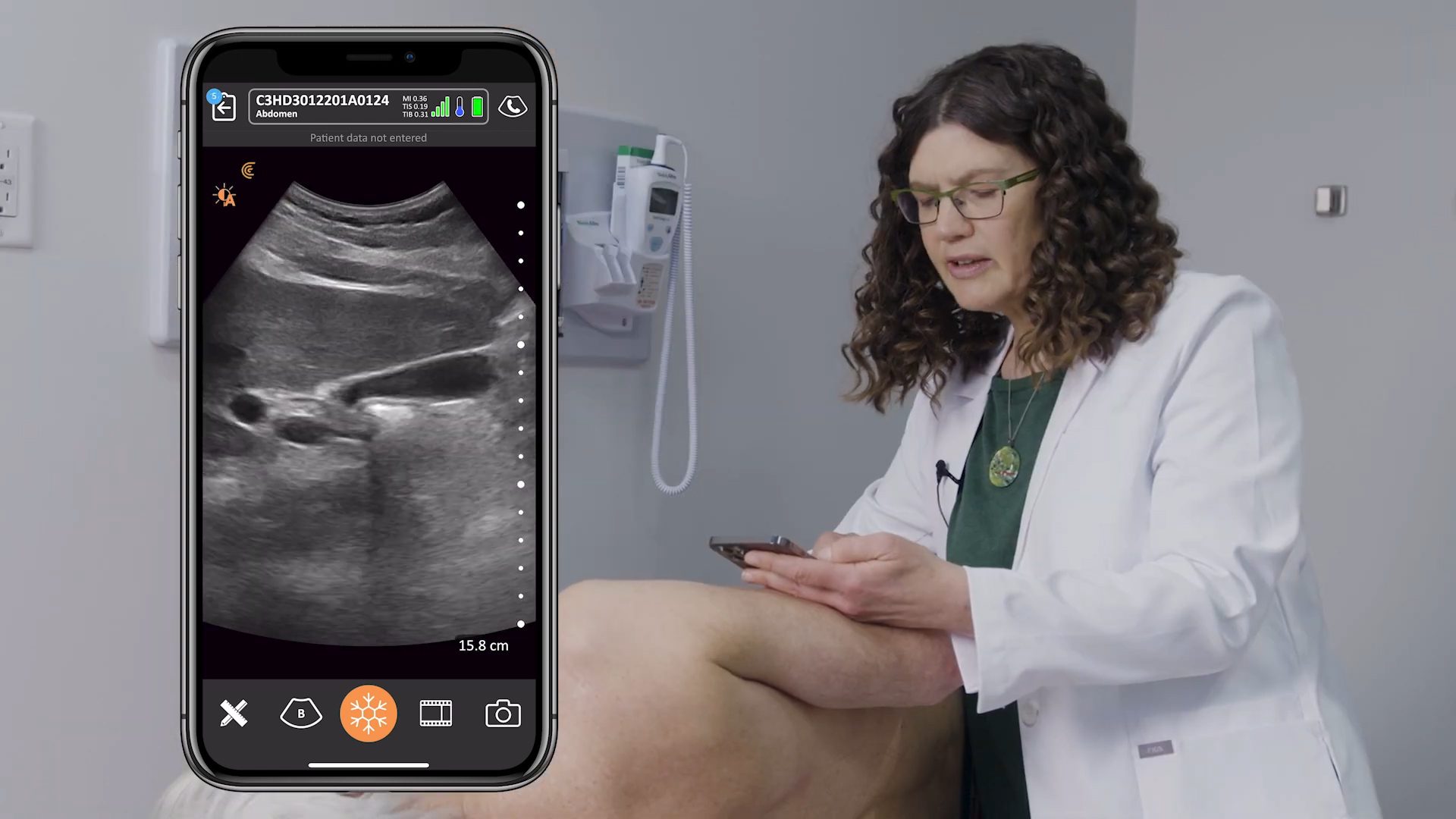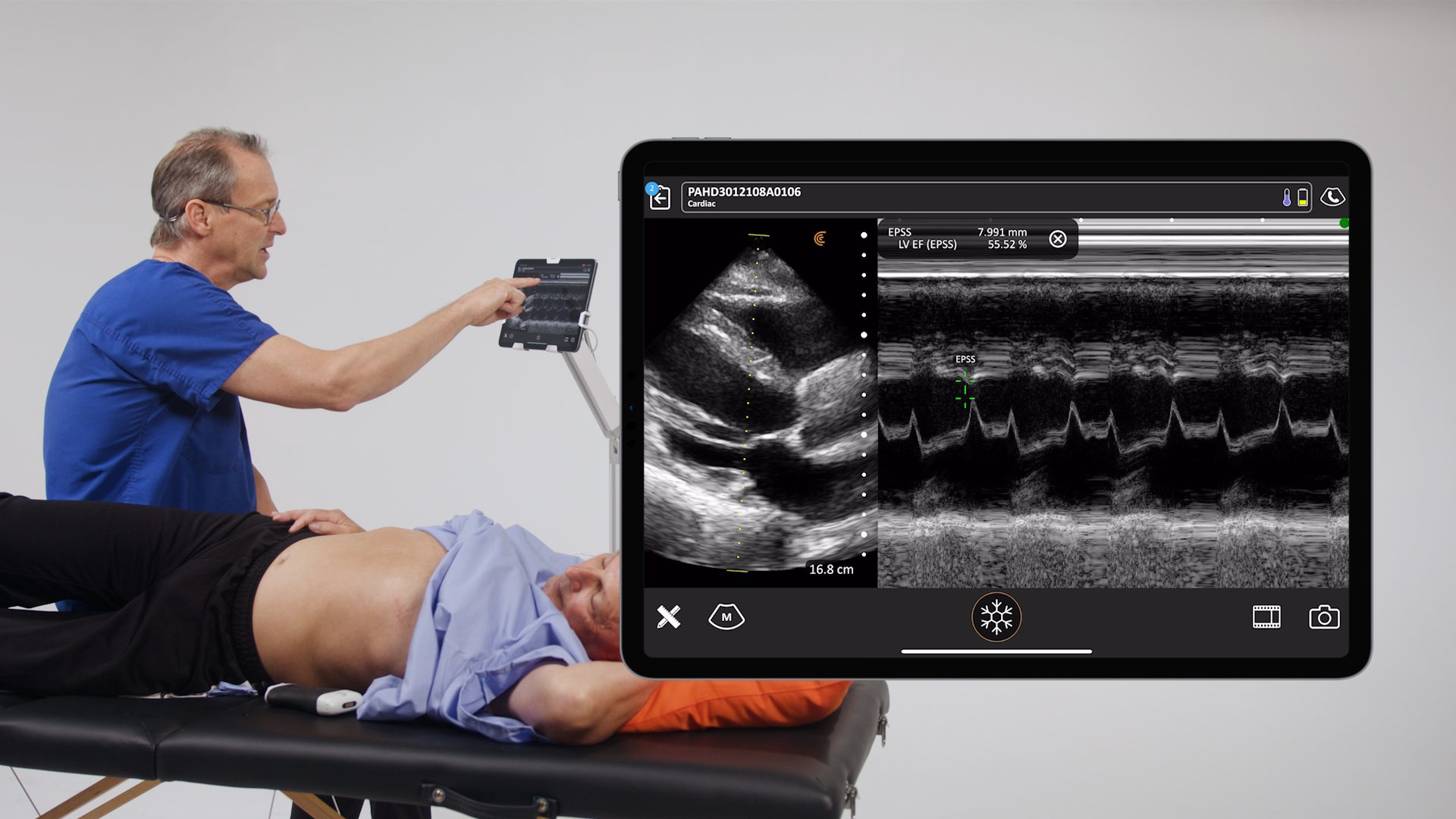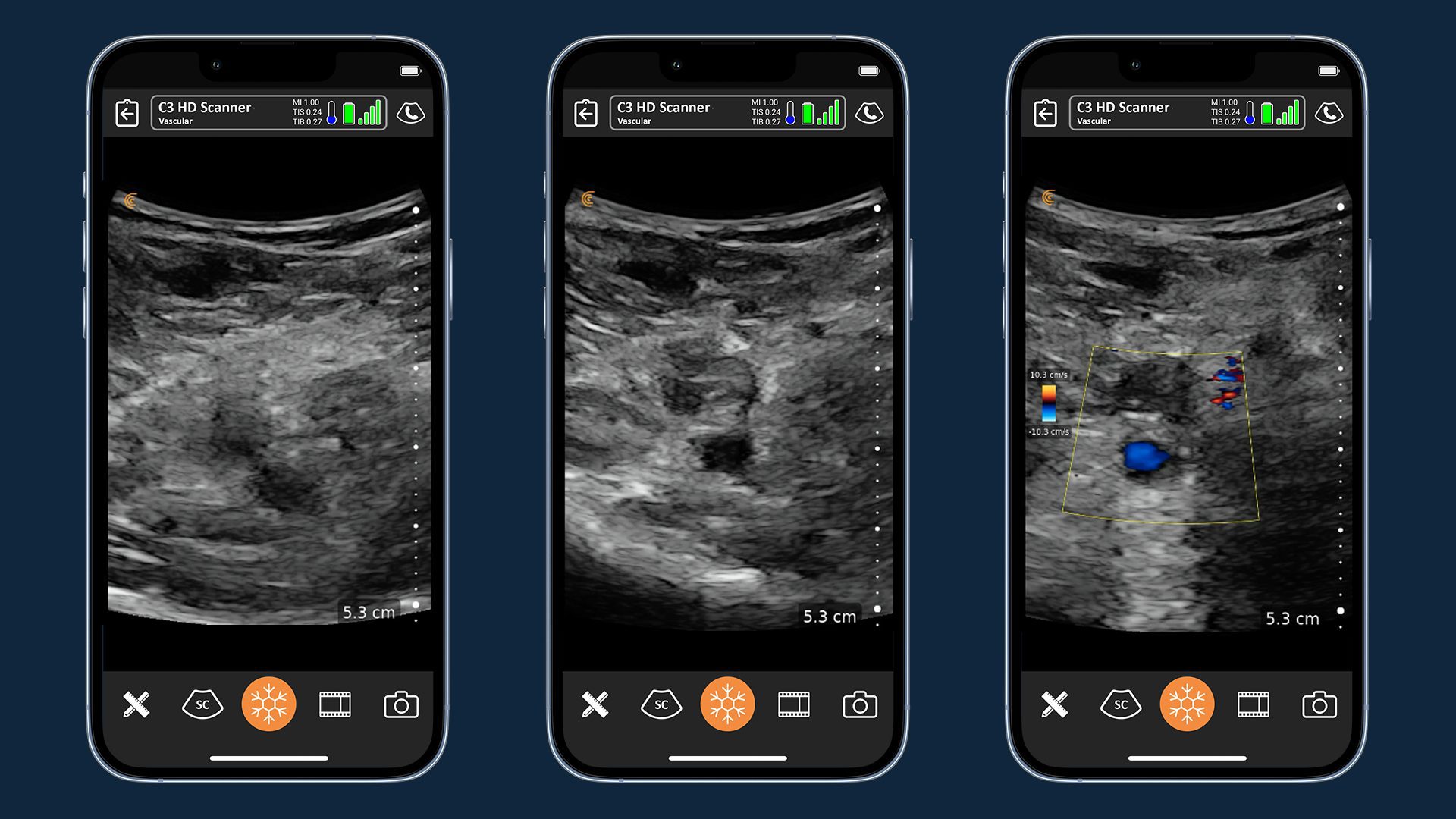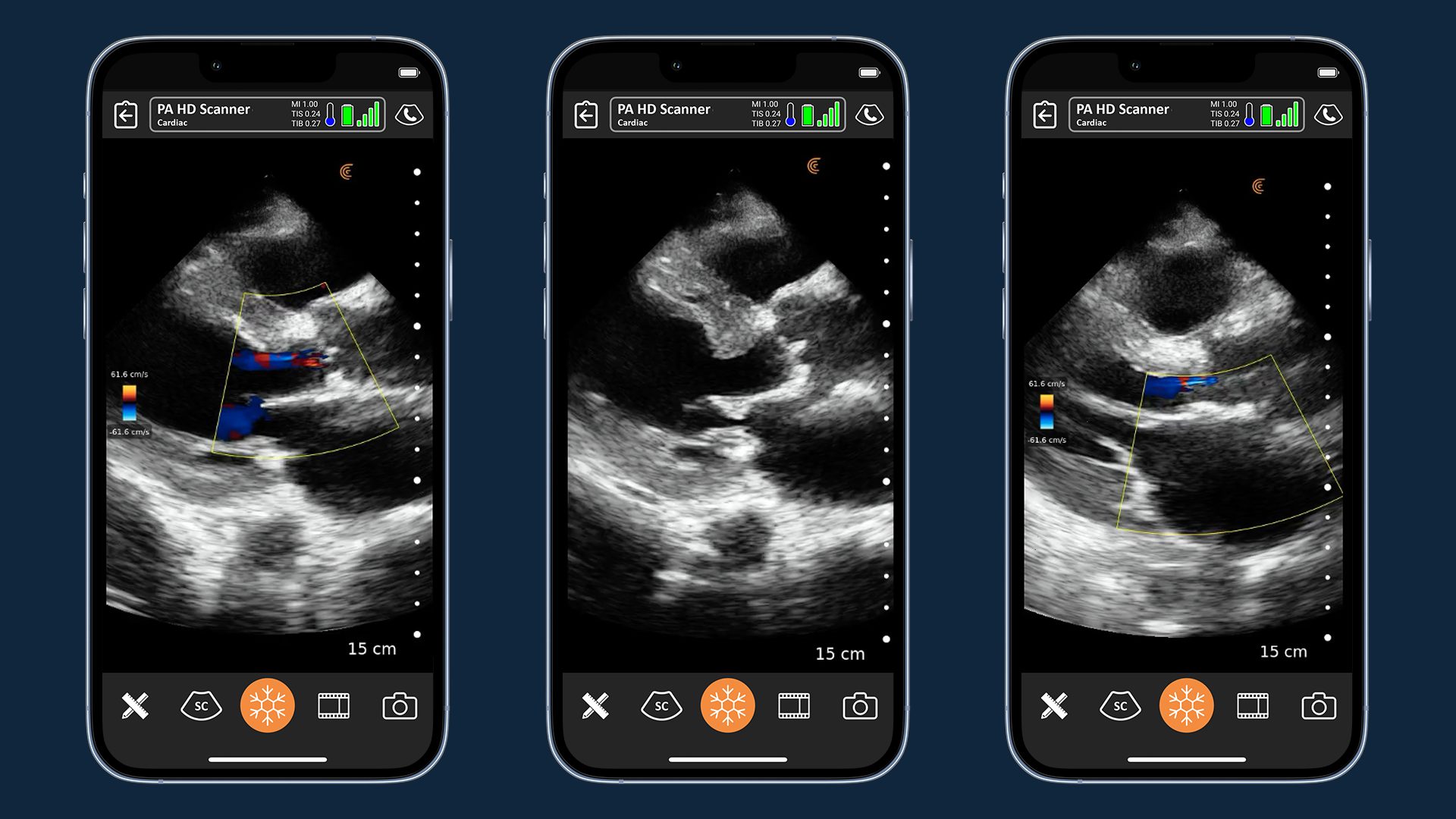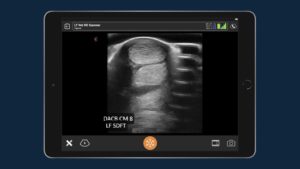Over the past year, more primary care and general practitioners (GPs) than ever have purchased a Clarius handheld system. With our mission to enable more clinicians to improve patient care through the power of medical imaging, we get excited to hear from groups of physicians who haven’t traditionally used handheld ultrasound. So, we talked to a few customers about how they’re using Clarius in their practice and we reviewed journal articles about the adoption of point-of-care (POCUS) ultrasound among primary care physicians. Here is what we learned.
Some practitioners from rural areas, where medical imaging has not been readily available, shared that they are able to diagnose and treat their patients more quickly. “With handheld ultrasound, we’re now able to complete many ultrasound exams, including cardiac ultrasound, lung ultrasound and abdominal ultrasound,” said Dr. Virginia Robinson, a family physician in rural British Columbia, “…now all of a sudden, we have a small handheld device that can be easily sterilized and kept clean so we can use it in the diagnosis of COVID-19 and quickly clean it between patients.”
While, some primary care physicians are new to using ultrasound, others have been using ultrasound for some time. For example, Dr. Brian Driedger is a family medicine practitioner who switched from a laptop system to Clarius more than a year ago. “It is extremely convenient for office use and will save unnecessary visits to the ultrasound department when the presentation of the fetus is in doubt. I could not imagine running our practice without this tool,” he explained.
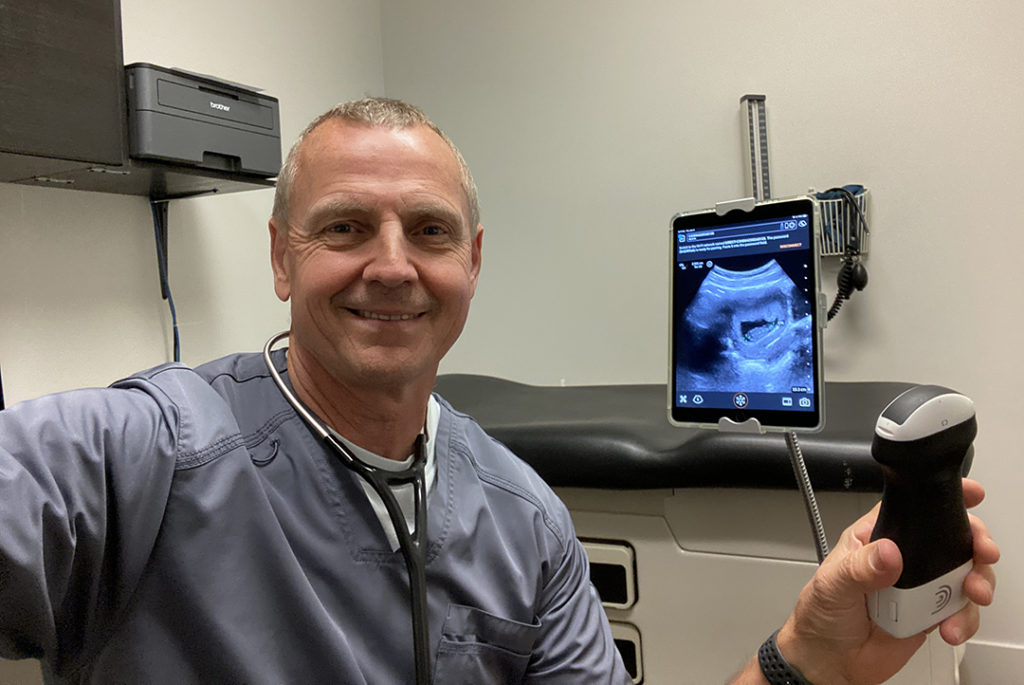
In addition to talking to our customers, we searched for studies and reports on the use of point-of-care ultrasound among this cohort of physicians. Let’s explore a quick synopsis of three publications we found that delve into the use of POCUS by primary care physicians.
POCUS Adoption is High in Switzerland with 49% of Primary Care Physician Relying on it for a Wide Range of Clinical Applications
The most recent study was published by the BMC Family Practice Journal in July 2020, entitled: The use of ultrasound in primary care: longitudinal billing and cross-sectional survey study in Switzerland. “According to billing data, 49% of the GPs used ultrasound and provided 130,245 exams to 67,180 patients between 2004 and 2018.” The study reported ultrasound use has become more frequent among GPs. It also explored applications of ultrasound: 69% of all exams were related to organs in the abdomen, with more exams performed on women than men. The study concludes that the “…use of ultrasound is high among general practitioners, and it covers a wide range of clinical indications.”
POCUS is Thoroughly Established Among American Emergency Physicians and Safe to Use by Primary Care Physician to Aid with Diagnosis
A paper published in the Ultrasound Journal in November 2019 found that while POCUS is thoroughly established in emergency medicine in North America, that there is room for greater adoption among primary care physicians who can safely use ultrasound to aid in diagnosis and to provide better patient care. The authors of “Point-of-care ultrasound in primary care: a systematic review of generalist performed point-of-care ultrasound in unselected populations” reviewed 19 articles, 26 meta-analyses and 168 primary studies on the clinical use of POCUS.
This paper offers a detailed analysis of studies on the use of POCUS to study the heart, lungs, vessels, abdomen, obstetrics, the eye, soft tissue and musculoskeletal issues. “The studies found in general either high sensitivity or high specificity for the particular test studied, and in some cases high total accuracy and superiority to other established diagnostic imaging modalities. POCUS also showed faster time to diagnosis and change in management in some studies.”
POCUS Alters the Primary Care Physicians Diagnosis Process and Clinical Decision Making in Nearly 75% of Patient Cases in a Danish Study
A 2016 study from Denmark provides the most detailed examples of how ultrasound is used by GPs: Use and impact of point-of-care ultrasonography in general practice: a prospective observational study.

The objective of the study was to: “describe how general practitioners (GPs) use point-of-care ultrasonography (POCUS) and how it influences the diagnostic process and treatment of patients.”
Although the use of POCUS varied among practitioners, when it was used, it had a major impact: “using POCUS altered the GPs’ diagnostic process and clinical decision-making in nearly three out of four consultations!” The study involved 20 GPs in office-based general practice and some interesting results.
- POCUS was used with 574 patients or 8.6% of all patients seen.
- The GPs scanned a variety of organs, covering more than 100 diagnoses.
- Each scan took about 5 minutes to complete.
- Ultrasound increased confidence in a diagnosis in 89.2% of patients.
- The ultrasound scan resulted in a change of diagnosis in 49.4% of patients including a reduction in referrals to secondary care and change in treatment of patients.
- POCUS resulted in a change in the management plan for 50.9% of patients.
Our review of available research and discussions with our customers make it clear that GPs are a diverse group of physicians, with the common observation that the majority of ultrasound exams performed by GPs focus on the abdomen, lungs and heart offering safe diagnosis.
Goodbye Stethoscope?
While ultrasound may not have replaced the stethoscope yet in every corner of the world, it’s clear that the emergence of more affordable and easier-to-use ultrasound systems is leading to the increased use of ultrasound among primary care physicians. Stethoscope beware, POCUS is silently taking over and delivering on the promise of better patient care!
The Clarius C3 HD is the most popular ultrasound scanner purchased by Clarius users who identify themselves as primary care physician and general practitioners. Click here to learn about Clarius for GPs in family practice. Visit our video resource page to learn how to use Clarius for common ultrasound exams.


